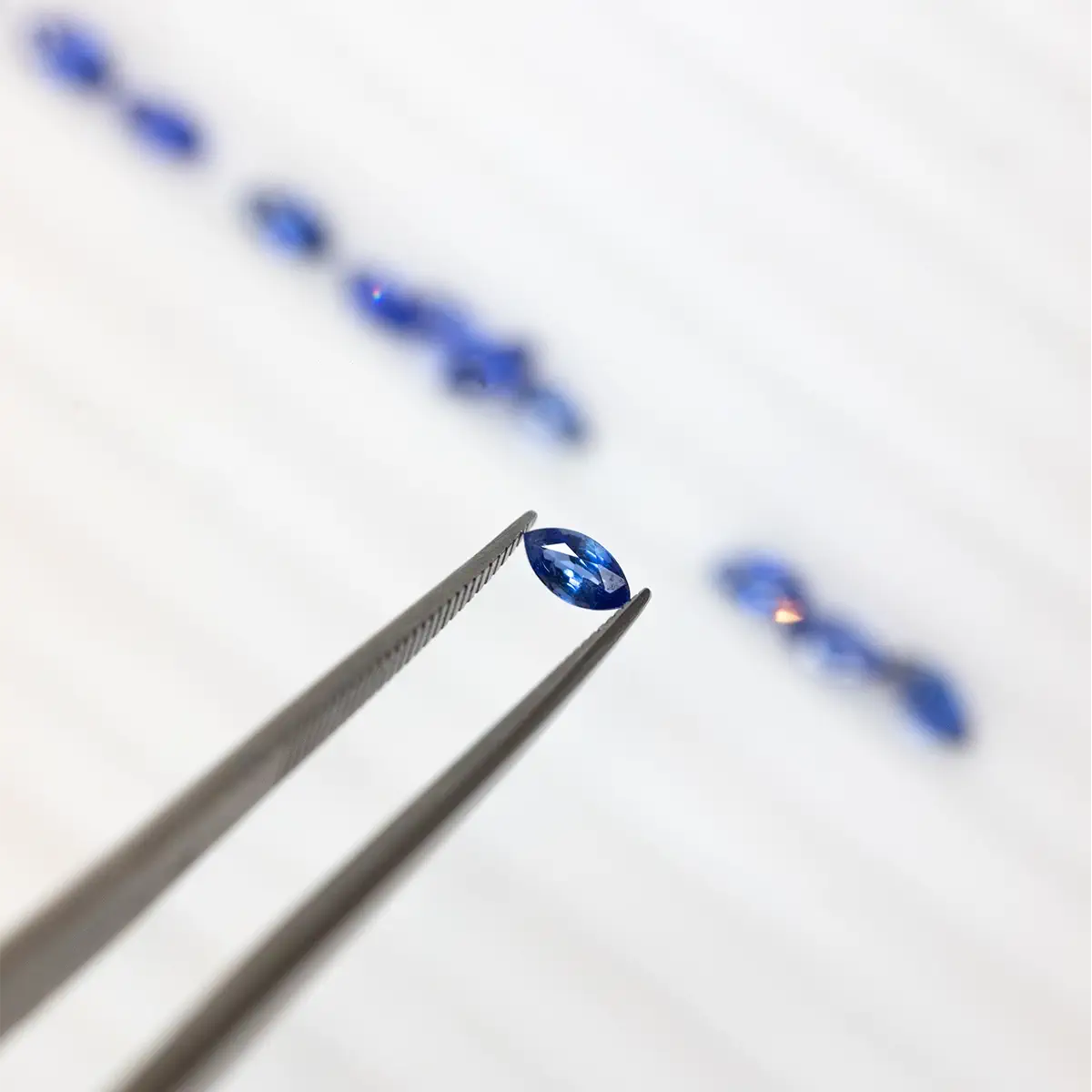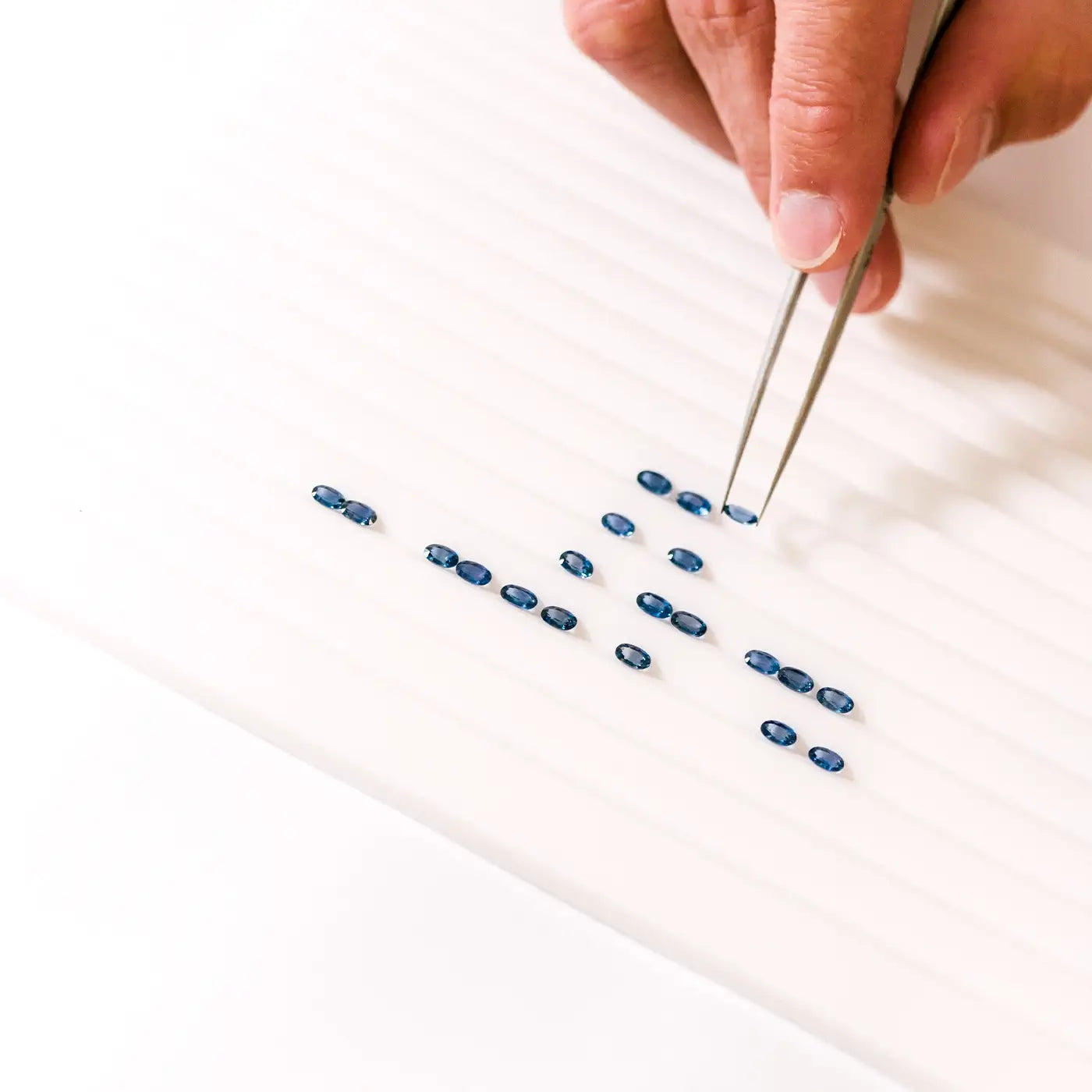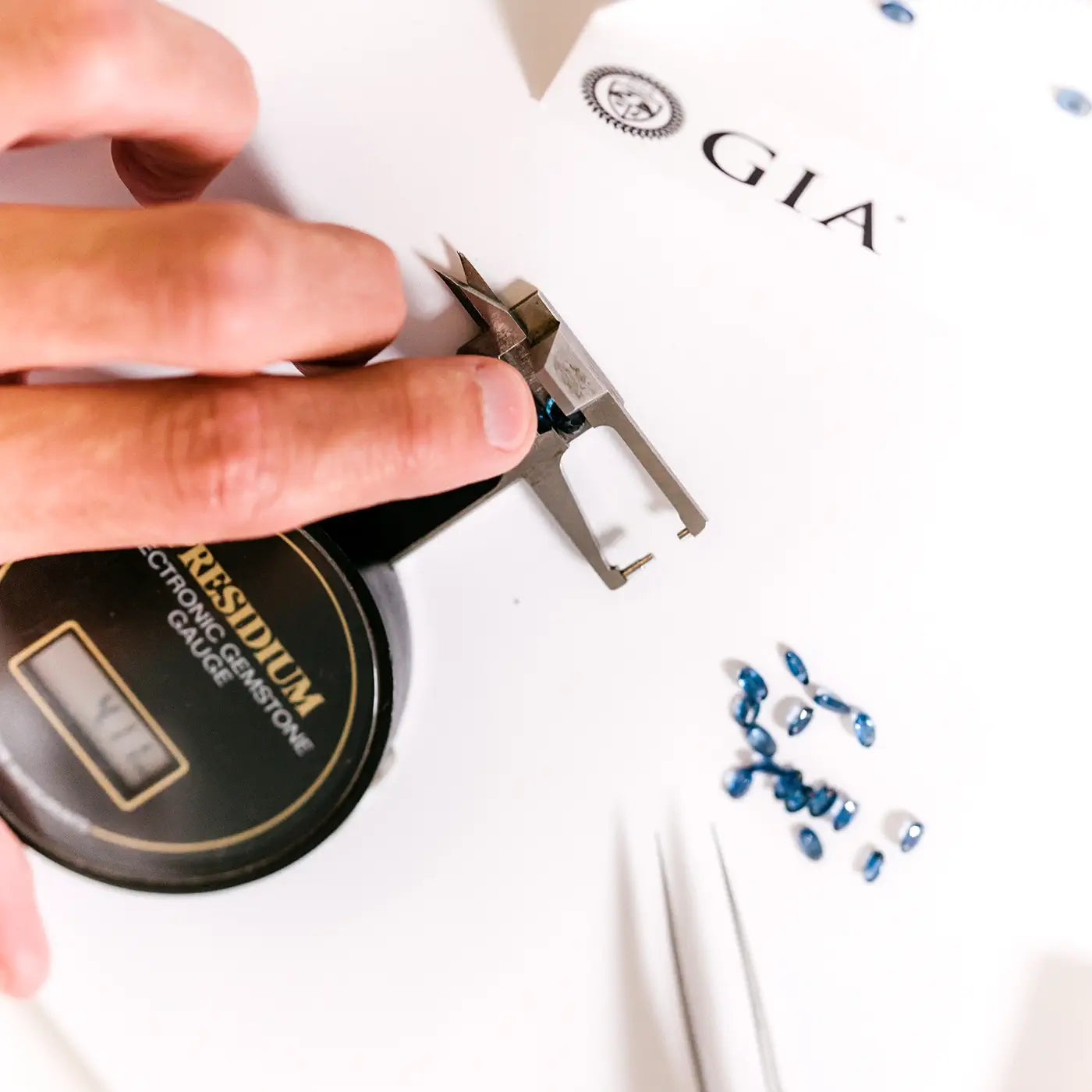Understanding Sapphires for Bracelets
Sapphires are best known for their rich blue color, but they also come in a wide range of hues. Durable and elegant, sapphires are a popular choice in bracelet design. Understanding the key quality factors will help you choose a sapphire tennis bracelet with clarity and confidence.

The Key Factors in Evaluating Sapphires
Like other colored gemstones, sapphires are evaluated based on Color, Clarity, Cut, and Carat Weight. Among these, color is the most important when assessing value.

Color
Color is the main factor in determining a sapphire’s quality. The most valuable sapphires display a vivid, evenly saturated blue, with medium to medium-dark tone and minimal color zoning.
Sapphire color is described by:
- Hue: The basic color. Pure blue is most prized. Sapphires with slight violet or green undertones are less valuable.
- Tone: How light or dark the color appears. Medium to medium-dark tones are preferred.
- Saturation: The intensity of the color. High saturation without being too dark results in the best visual impact.
Sapphires are also available in a wide range of other colors, known as "fancy sapphires" — including pink, yellow, orange, green, purple, and the rare padparadscha (a pink-orange mix). These colors are especially popular for rainbow sapphire bracelets, which feature a spectrum of matched stones in a vibrant, multi-color arrangement.
In all cases, color uniformity is essential for a clean and balanced appearance in bracelet designs.

Clarity
Sapphires usually contain fewer visible inclusions than emeralds but more than diamonds.
- Eye-clean sapphires are preferred — stones without visible inclusions to the naked eye.
- Common inclusions include tiny rutile needles or silk-like patterns, which are acceptable as long as they don’t affect transparency or durability.
In bracelets, sapphires should appear transparent and well-matched, with no inclusions visible from a normal viewing distance.
Sapphire color is described by:
- Hue: The basic color. Pure blue is most prized. Sapphires with slight violet or green undertones are less valuable.
- Tone: How light or dark the color appears. Medium to medium-dark tones are preferred.
- Saturation: The intensity of the color. High saturation without being too dark results in the best visual impact.
Sapphires are also available in a wide range of other colors, known as "fancy sapphires" — including pink, yellow, orange, green, purple, and the rare padparadscha (a pink-orange mix). These colors are especially popular for rainbow sapphire bracelets, which feature a spectrum of matched stones in a vibrant, multi-color arrangement.
In all cases, color uniformity is essential for a clean and balanced appearance in bracelet designs.

Cut
Sapphire cut affects both color and brilliance. Unlike diamonds, sapphires are not cut to ideal proportions but rather to maximize color and weight.
- Well-cut sapphires display even color, good symmetry, and lively reflection of light.
- Shapes commonly used in bracelets include oval, cushion, round, and emerald cuts.
In bracelets, stones should be matched in shape, size, and cut quality for consistency across the piece.
Carat Weight
Sapphires are denser than diamonds, so they will appear smaller at the same carat weight.
- Total carat weight (ctw) refers to the combined weight of all sapphires in the bracelet.
- Larger sapphires are rarer and more expensive per carat.
In bracelets, using well-matched smaller sapphires often results in a more uniform and elegant appearance.
Origin
The origin of a sapphire can influence its value, especially for high-end stones.
- Kashmir (rare): Produces velvety blue sapphires, highly prized and mostly historic.
- Burma (Myanmar): Known for strong, rich blue tones.
- Sri Lanka (Ceylon): Produces sapphires with a lighter, bright blue color.
- Madagascar: A major modern source of high-quality blue and fancy sapphires.
- Thailand and Australia: Often produce darker-toned sapphires.
Origin can sometimes be determined through gemological testing and may appear on certificates for important stones
Certification
Due to the cost of certification, sapphire bracelets are typically not certified unless they include larger or high-value stones.
For important pieces, certificates from trusted labs such as:
- GIA (Gemological Institute of America)
- Gübelin
- SSEF
- GRS
can confirm origin, treatment status, and whether the sapphire is natural.

Final Thoughts
When choosing a sapphire bracelet, focus on color, clarity, cut, and the uniformity of the stones. Ask about treatments, and for more valuable items, check if origin and certification are available.
These factors help ensure you select a bracelet that is both visually striking and a reliable representation of sapphire quality.